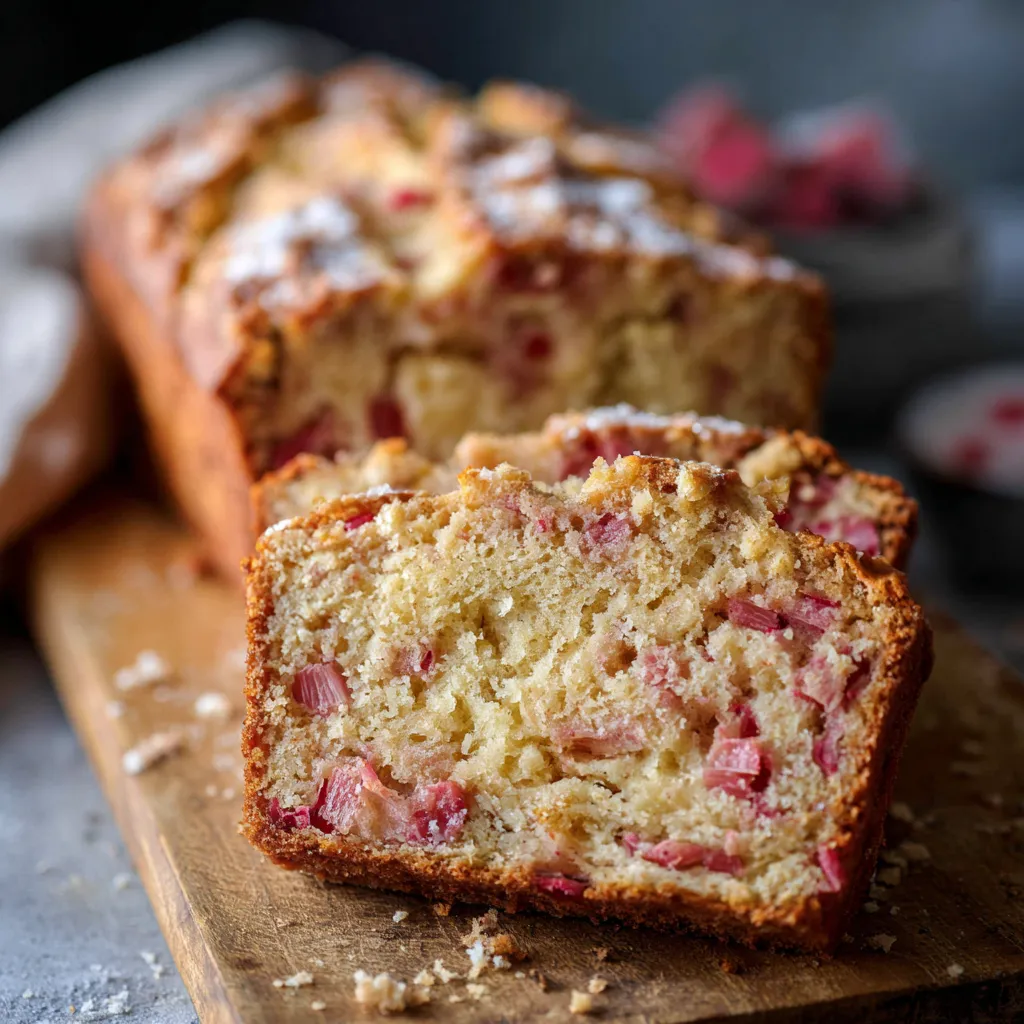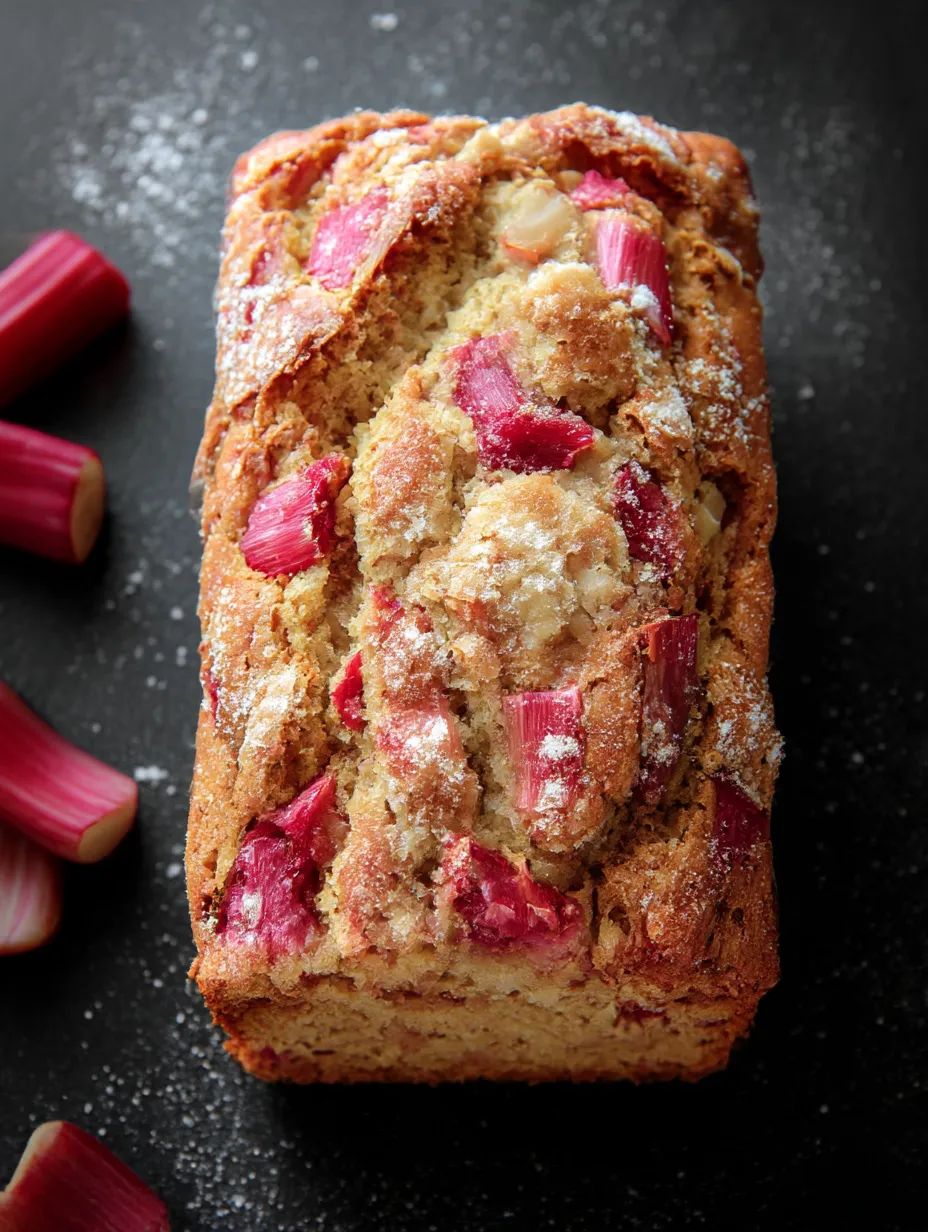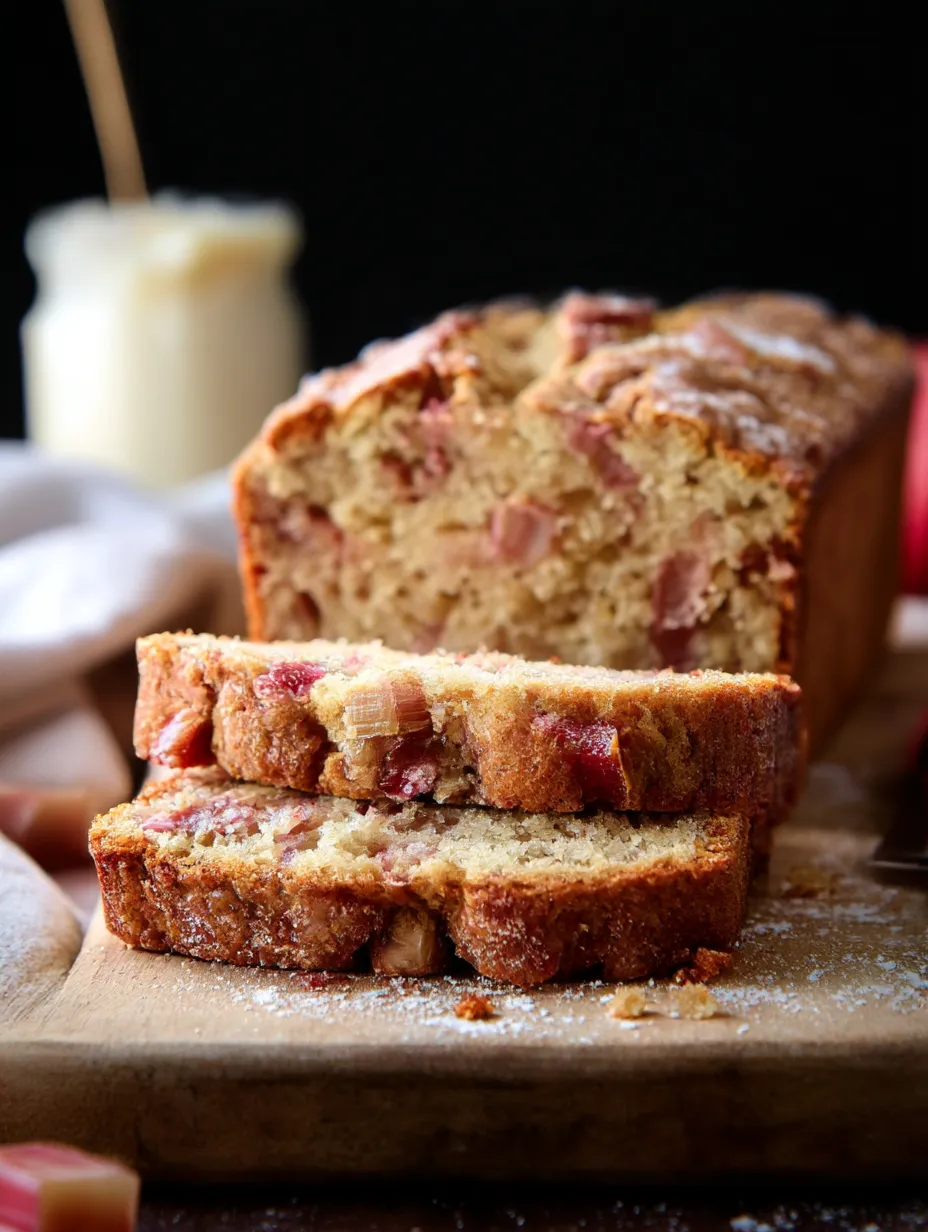 Pin it
Pin it
Every spring and summer, when our backyard goes wild with rhubarb, I love whipping up this moist, sweet-meets-tart bread. Grab some staple ingredients and fresh stalks, and you'll have a delicious loaf that's perfect for breakfast or an easy snack.
I’ll never forget baking my first loaf. It filled the house with that incredible smell, and my kids lined up at the kitchen island for a warm slice. No matter how many times I bake it, it always brings back those cozy memories.
Inviting Ingredients
- Flour: gives your loaf its form, pick unbleached all-purpose for extra lift and lightness
- Salt: makes all the other flavors stand out, go with finely ground sea salt for even flavor
- Baking powder: makes sure your bread rises, so always check it's still fresh before using
- Vanilla: rounds out those sweet notes, real vanilla extract really makes it pop
- Sugar: adds sweetness and makes a crisp top, classic white sugar is best here
- Oil: keeps your loaf moist, stick with a neutral one like canola or vegetable
- Buttermilk: helps your crumb stay extra soft and tangy, always smell it before adding
- Egg: binds the mix together, a big, fresh egg works best
- Chopped rhubarb: brings that punchy flavor, get stalks that feel firm and look bright pink or red for the prettiest slices
Super-Simple Instructions
- Cool It Down and Serve:
- Let your bread hang out in the pan at least fifteen minutes before moving it to a rack to fully cool. That way it keeps from falling apart.
- Bake It Up:
- Pop that filled pan in the middle of your oven at 350. Bake 60 to 65 minutes. Check after an hour by poking the center with a toothpick; if you see wet batter, give it a few more minutes. If just a little sticky crumb sticks, it’s just right.
- Add the Batter and Finish Off:
- Pour the batter in your prepared pan, smooth the top, then scatter a tablespoon of sugar over for sparkle and crunch.
- Fold in the Rhubarb:
- Gently stir those rhubarb chunks into the mixture and don’t overdo it or your bread gets tough. Just a gentle fold will do. Even it out in your bowl before you pour it into the pan.
- Mix in Your Flour:
- Stir the flour gently into the wet stuff with a spatula or spoon, just until you see a little flour here and there. Overmixing makes it dense, so leave those streaks.
- Sprinkle in Salt and Baking Powder:
- Add your baking powder and salt next. Make sure you mix them in super well, or you’ll end up with weird-tasting bites.
- Combine All the Wet Stuff:
- In your biggest bowl, mix up egg, buttermilk, oil, sugar, and vanilla until it’s pale and totally blended. This spreads the sugar and flavor everywhere.
- Prep Your Rhubarb:
- Wash, dry, and trim the ends off your rhubarb. Chop it into half-inch pieces and measure out two cups. If you have extra, stash it in the fridge for tomorrow.
- Grease the Pan:
- Mist your loaf pan with a bit of nonstick spray so nothing sticks. Park it on the counter while you prep everything else.
 Pin it
Pin it
I just love how the rhubarb turns all gooey and sweet in every bite. My daughter always digs out the pink slices and fights for the sugared crust at the end.
Saving Your Loaf
Once your bread has finished cooling, wrap it up tight with plastic or drop it in a sealed container to keep it fresh. It'll stay tasty for three days on your counter—add a few more days if you chill it when it's hot. Want to stash it longer? Freeze slices for up to three months and nuke a piece anytime you want a snack.
Swaps and Options
If you're low on buttermilk, swap in the same amount of plain yogurt thinned out with some milk. Or, for a dairy-free twist, use non-dairy milk with a spoonful of lemon juice. Out of oil? Melted unsalted butter will do the trick. Frozen rhubarb is great too, just thaw and blot it dry before tossing in.
 Pin it
Pin it
Serving Ideas
Cut thick slices and serve warm with a swipe of butter or a spread of cream cheese for the ultimate brunch. Toast some up and have it with your coffee or tea. Wanna go a little fancier? Add a puff of whipped cream for dessert.
Roots and Traditions
People all over northern areas have been making this loaf for ages. Rhubarb grows like crazy and doesn't need much care, so folks would toss extra stalks into their bakes. It started in old farm kitchens where nothing went to waste and you just used what was in the pantry.
Frequently Asked Questions
- → Can I use frozen rhubarb instead of fresh?
Frozen rhubarb totally works. Just let it defrost and squeeze out any extra water before you add it in so your batter isn't too wet.
- → How do I prevent the bread from sticking to the pan?
Line your pan with parchment or spray it well so the bread slips right out when it's done baking.
- → What does buttermilk add to the bread?
Buttermilk keeps the loaf extra soft and gives the bread that nice slight tang. It goes really well with rhubarb.
- → Can I substitute the oil with butter?
Of course, you can melt some butter and swap it in. It'll taste a bit richer, but the bread might come out with a different texture.
- → How should I store leftovers?
Let the loaf cool, wrap it up, and it’ll stay fresh on the counter for three days. If you want it to last longer, pop it in the fridge.
